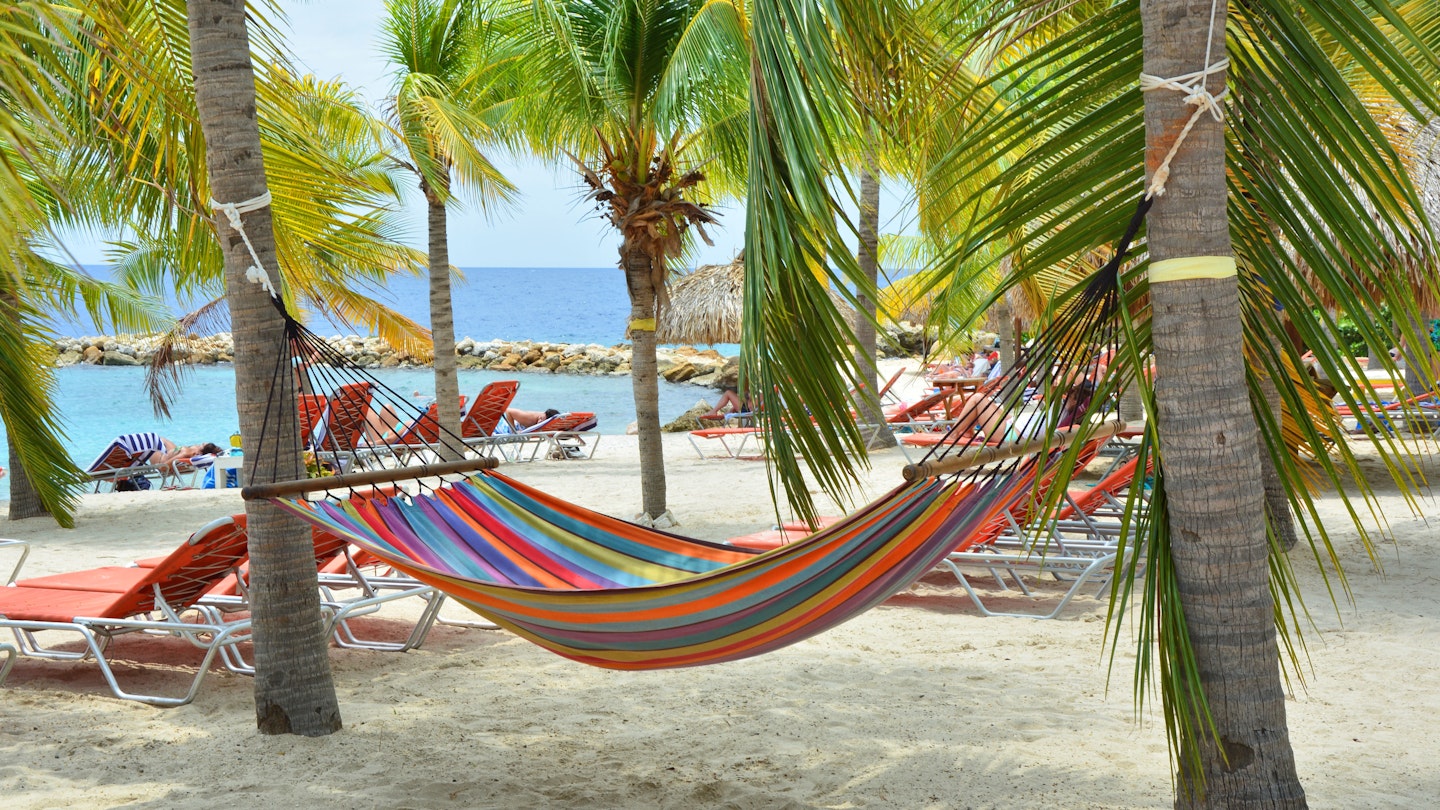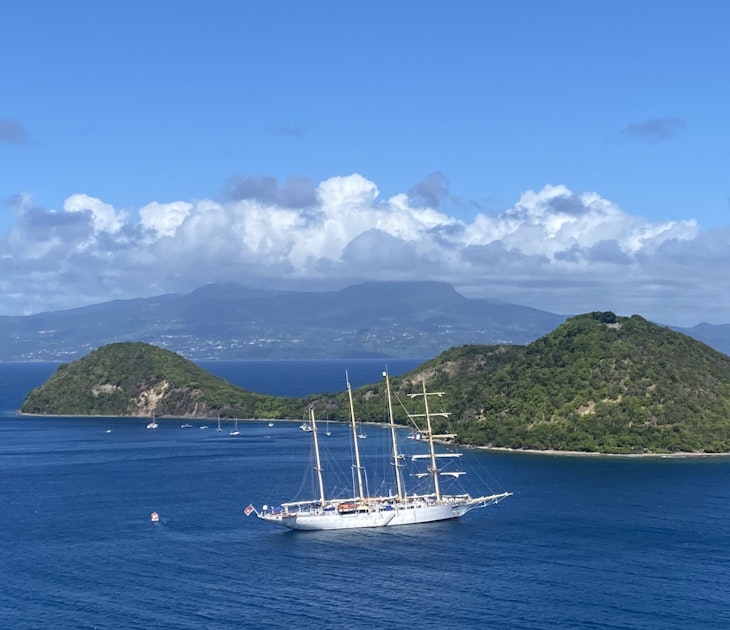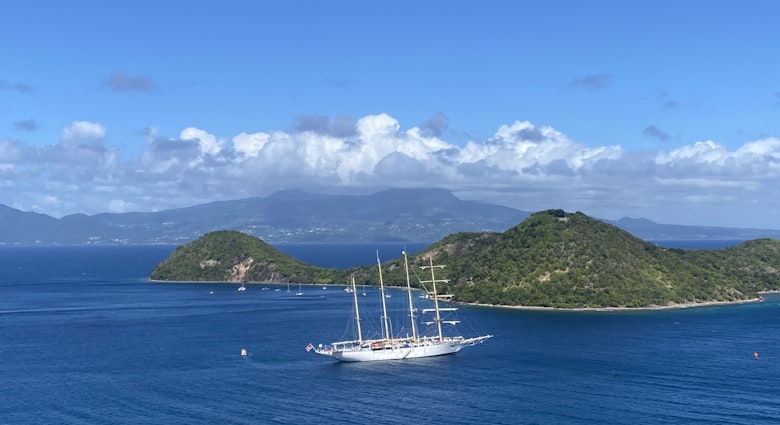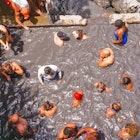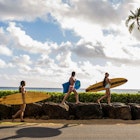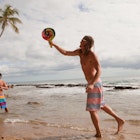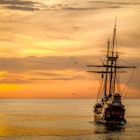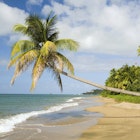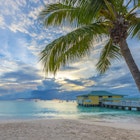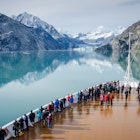If you head to Curaçao’s capital, Willemstad, you’ll find a larger-than-life installation spelling out the local expression dushi, meaning "sweet" or "nice."
It’s safe to say that the word has become the unofficial slogan of the island, so head on down, grab yourself a blue drink (tinted by Curaçao’s signature liqueur, of course) and enjoy the dushi life of sun and sand.
Here are the top reasons why Curaçao should be your next vacation destination in the Caribbean.
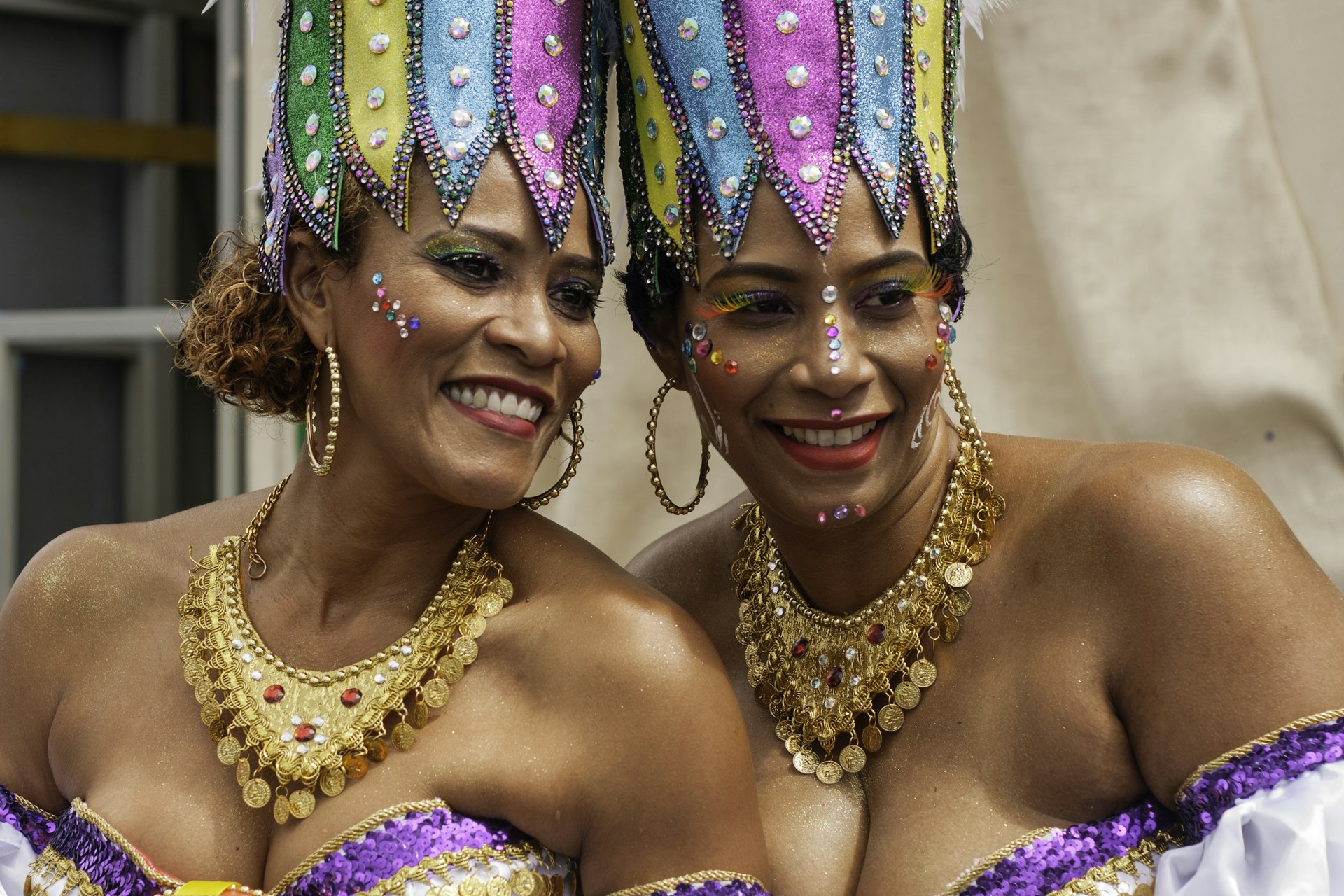
1. Curaçao’s diverse cultural heritage
Curaçao harbors one of the most multifaceted cultures in the Caribbean, thanks to its long, varied history and its close proximity to South America. Originally settled by the Arawaks nearly 6000 years ago, the island came under Spanish rule in the early 16th century, but it was abandoned because of its perceived lack of riches. The Dutch West India Company picked up where the Spanish left off, and Curaçao became a major hub for the slave trade.
In the mid-1600s, large numbers of Jewish refugees settled in Curaçao to escape the Spanish and Portuguese Inquisitions. The island was later shuffled back and forth between the Dutch and the British Empire before the Netherlands finally claimed ownership in 1815. Today, Curaçao exists as an independent state, but citizens carry Dutch passports.
It’s not uncommon to hear Curaçaoans ping pong between languages, as most people speak multiple: Dutch, Spanish, Papiamentu (the local creole) and English. These diverse cultural influences also manifest in the country’s music – radios blast bachata, reggaetón, American pop, tumba and ritmo kombina, the island’s own genre of tunes – as well as in its food scene. Iguana stew with a side of bitterballen, anyone?

2. Historic downtown Willemstad
First established in 1634 with the construction of Fort Amsterdam, Willemstad is the feather in Curaçao’s historical cap. Its downtown, a Unesco World Heritage site filled with candy-colored Dutch colonial buildings, simultaneously exudes European and tropical vibes, and is a port favorite for cruise-goers. Just as fascinating as the well-preserved buildings are the not-so-preserved ones, perfect in their crumbling grandeur.
While the town’s Handelskade (Merchant’s Wharf) is an iconic spot to hang out, take the time to wander the winding streets of the city, where you’ll find inviting bars, authentic dining spots such as Plasa Bieu, and the technicolor floating market, where fruit vendors from Venezuela dock to sell their wares. The market itself doesn't actually float, but the sellers' boats bob behind their brightly hued stalls full of mangoes, plantains and papayas.
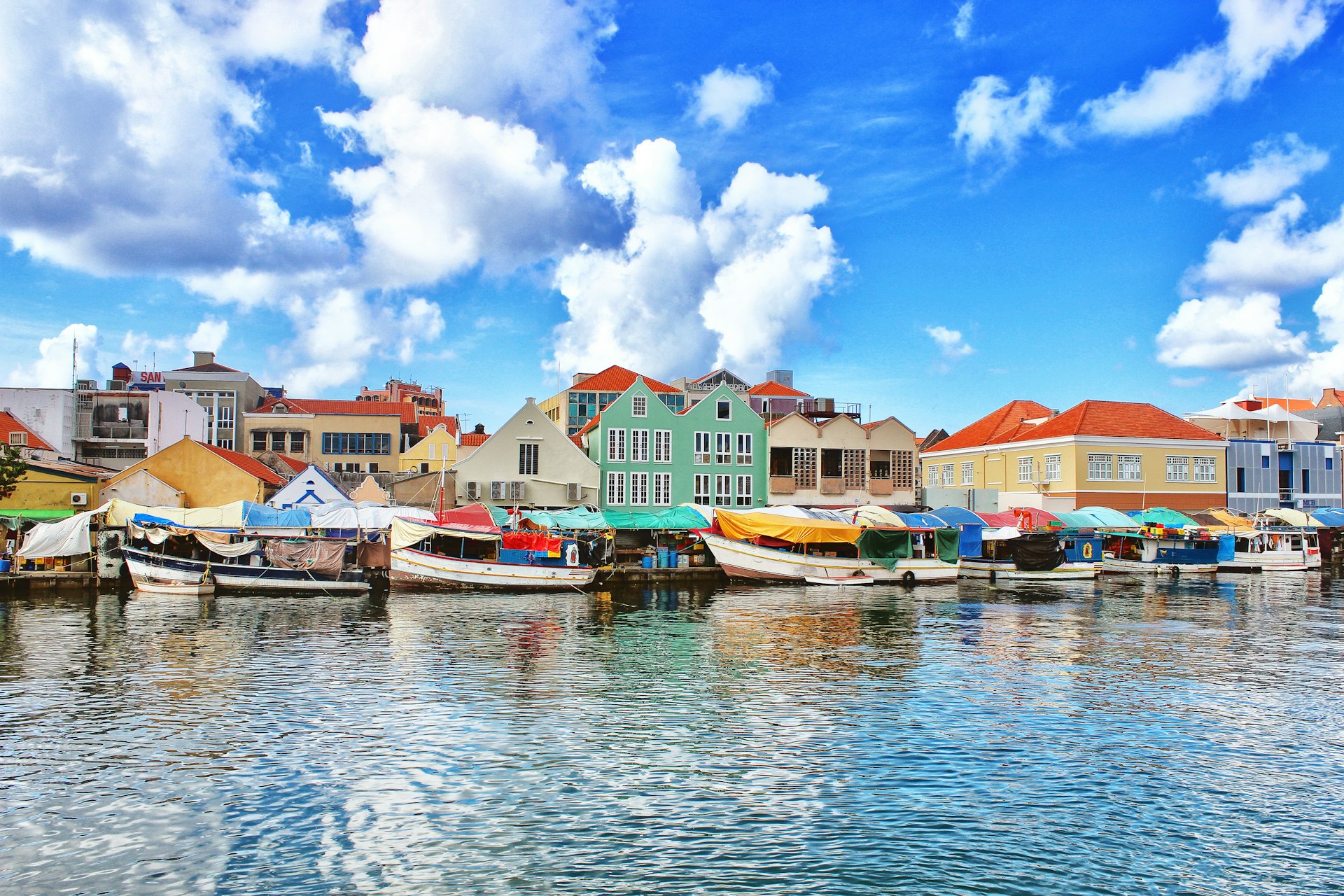
Downtown Willemstad is also home to Museum Kura Hulanda. Housed in 19th-century slave quarters, the museum's exhibits extensively cover the history of slavery in the Caribbean, a story in which Curaçao played a central role.
Interesting fact: Curaçao’s colorful buildings weren’t always that way. In 1918, Governor Albert Kickert complained of constant headaches that he attributed to the then-whitewashed city. He ordered all the buildings to be repainted in different colors to combat the reflective nature of the white walls and end his suffering. It turns out that Kickert actually owned a paint company that profited immensely off the new law, prompting Curaçao to prohibit their politicians from having private economic interests.

3. Curaçao's artsy side
When you think of street art, Curaçao is probably not on your radar, but that’s where you would be mistaken. Colorful murals sprawl across Willemstad’s buildings, particularly in the Otrobanda and Pietermaai neighborhoods, the latter of which is the city’s coolest new avenue for food and night life. Designs range from geometric shapes to realistic portraits to political commentary. Curaçao’s art scene also thrives in a number of museums and galleries. Learn about the Chichi figurine at Serena’s Art Factory or pick up a colorful print at Nena Sanchez’s downtown gallery. Nena has painted murals of her famous blue women across the city, so see if you can spot them. To see Willemstad's largest collection of works by Curaçaoan artists, head over to Gallery Alma Blou.
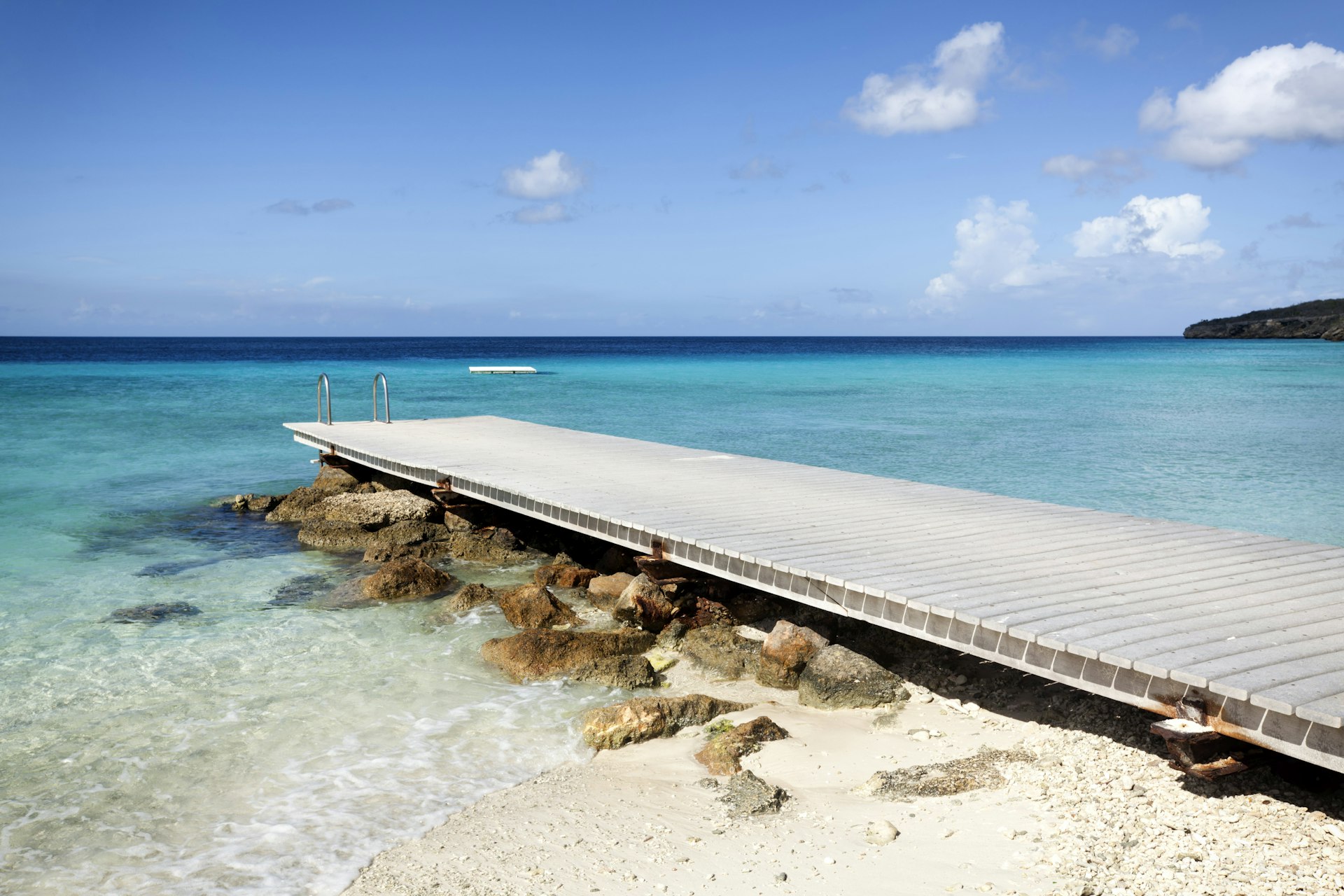
4. Curaçao's 35 beaches
While it takes less than two hours to drive Curaçao from tip to tip, it’s home to 35 beaches, each with their own individual personalities. Playa Knip, the island’s most famous beach, offers up crystal-clear waters and good amenities, while Playa Lagún is a more intimate and quirky spot, with weathered rowboats strewn across its golden sand. If you’re looking for a little more space to move around, head over to Porto Mari, a wide expanse of beach with breathtaking waters. Sit on the pier for a jealousy-inducing photo op, or grab a cold Amstel Bright at the conveniently located beach bar. Porto Mari is also a great stop for divers looks to explore the undersea treasures of Curaçao’s coast.
Want a beach experience with a dose of of luxury? Head down to the man-made coast at Jan Thiel Bay and Papagayo Beach, or if you have a little cash to burn, buy yourself a day pass to Baoase Luxury Resort – $50 will snag you a towel, cabana, snorkeling gear, kayaks, snacks and floaties, as well as access to one of the most beautiful resort coves on the island.

5. Christoffelpark and Shete Boka National Park
Looking for something to get the heart pumping? The island’s largest national park, Christoffelpark, is a perfect place to burn off some energy. Hike its namesake mountain and get a taste of the Curaçaoan outdoors. Eight trails varying in difficulty are available for exploration, and all can be completed without a guide. Should you want a little guidance, the park office can book a number of different informational tours, such as a pickup safari, a birdwatching excursion or a history tour.
To really get a sense of nature’s power, make the drive up to the northernmost point of the island to visit Shete Boka National Park. It’s a scene that you hear before you see. As you walk the path through the sparse volcanic landscape, a roar bounces off the rocks from a source eclipsed by the gray horizon. Walk a bit farther and the land gives way to a spectacular coastline where massive azure waves pummel the cliffs with unsettling force.
"Shete Boka" translates to "seven mouths" and refers to the series of inlets carved into the shoreline by the unrelenting waters. Visitors can stroll along a well-marked trail that hugs the coast to take in the mind-boggling views. Keep an eye out for the island’s greenest, scaliest inhabitants who live here in large numbers: iguanas.

6. A hoppin' island nightlife
For all its daytime activities, Curaçao certainly doesn’t get sleepy at night. Live music fills the air every night of the week in styles ranging from jazz to pop to soca, and festive bars offer ideal havens to tip back a few drinks. One of the island’s most well-known spots for live musical entertainment is Blues, a jazz and blues bar located in Avila Beach Hotel, a property built around a historic 18th-century mansion. Should those blue cocktails kick things into high gear, head down to the Mambo Beach complex to party, or hop over to Pietermaai, where you'll find several popular watering holes. Enjoy a cocktail at the chic seaside St Tropez Ocean Club or join the street party at Mundo Bizarro.
7. An affordable Caribbean getaway
If you're looking to travel to the tropics on a budget, Curaçao is consistently ranked as one of the most affordable islands in the Caribbean. While prices do increase during high season (December to April), they reduce during the summer and fall. Plus, the island is located outside the hurricane belt, so traveling during storm season isn't as risky as it is in other parts of the region.
Bailey Freeman traveled to Curaçao with support from the Curaçao Tourist Board. Lonely Planet contributors do not accept freebies in exchange for positive coverage.
This article was originally published in October 2016.

